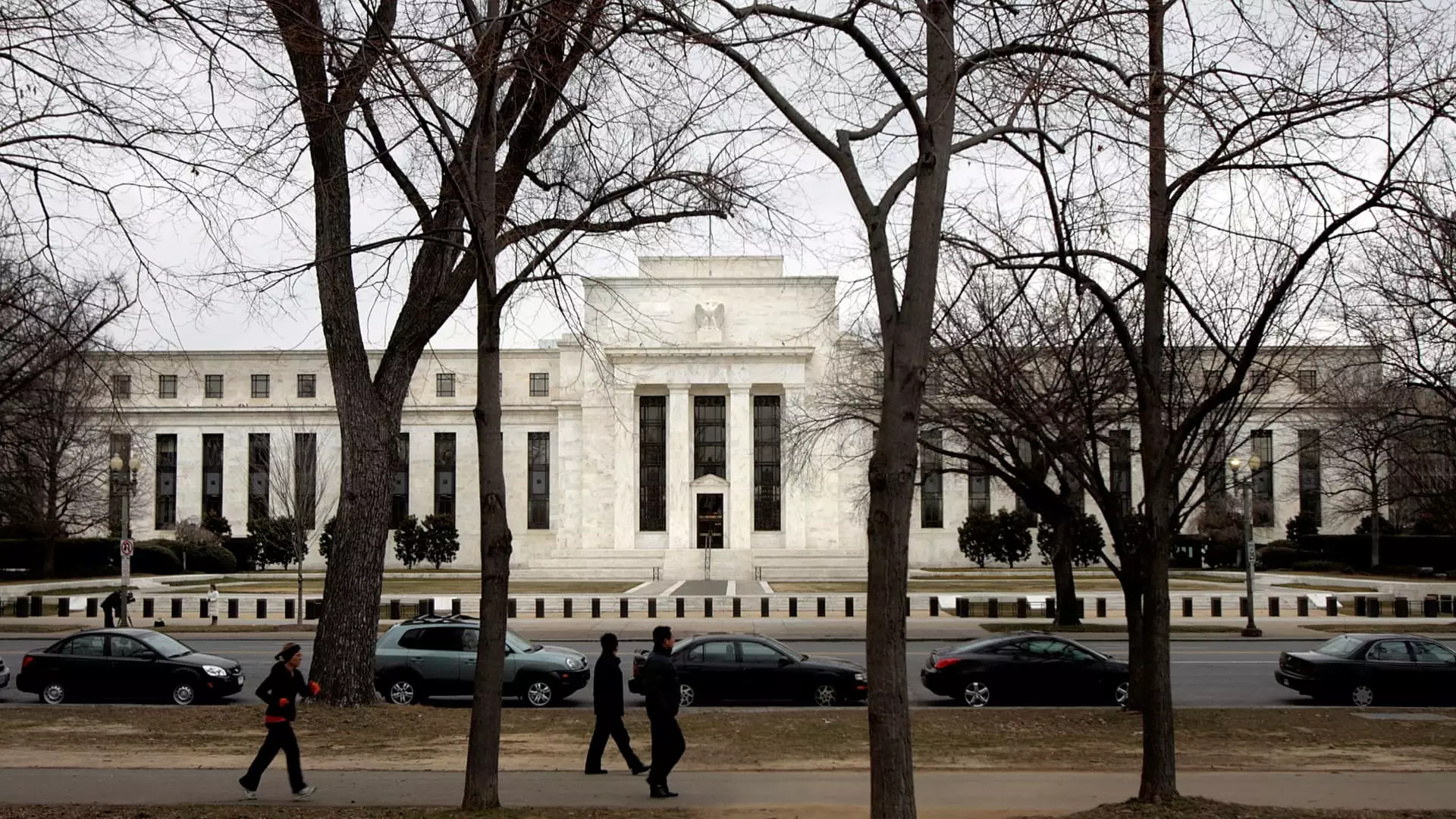On Wednesday, the Federal Reserve decided to maintain the current interest rates, signifying a cautious approach in light of persistent inflationary pressures that exceed the target rate of 2%. This decision is part of a broader narrative surrounding economic recovery and monetary policy adjustments post-pandemic. The Fed had already enacted significant rate reductions a year prior, cutting the benchmark rate by a full percentage point in an attempt to foster economic stability. Despite these measures, the inflation rate continues to hover at levels not seen since the early 1980s, fostering uncertainty about the economic landscape moving forward.
President Trump’s recent calls for immediate rate cuts illustrate the ongoing political pressures faced by the Fed as it navigates its independence in monetary policy. Analysts remain skeptical regarding the expected trajectory of further rate cuts later this year, suggesting that the pathway to relief from high borrowing costs could prove more challenging than initially anticipated.
For many consumers, the ramifications of high inflation are painfully tangible, manifesting through soaring prices across essential goods and elevated borrowing costs. Michele Raneri, a key figure in U.S. research at TransUnion, noted that while inflation concerns are somewhat subdued, they remain significant enough to impact monetary policy planning. Borrowers, especially those using variable-rate credit products, feel the weight of rising interest rates as they impede financial flexibility and consume a larger share of household budgets.
Recent surveys indicate that consumer expectations for more substantial rate cuts are tempered. Federal Reserve officials themselves echo this sentiment, tying it to the persistent risk of inflation. Even marginal adjustments will not yield the expected relief for consumers grappling with multiple financial burdens as costs continue to rise across the board.
The federal funds rate, while not directly charged to consumers, has significant downstream effects on the borrowing landscape. This connection amplifies the consequences for various loan types, including credit cards, mortgages, and auto loans. The average credit card interest rate has surged, with rates now exceeding 20%, marking a notable increase from just over 16% in early 2022. Consumers seeking debt relief are unlikely to see meaningful reductions in annual percentage rates (APRs) soon, aggravating already tight financial circumstances.
Financial analysts, including Greg McBride from Bankrate, caution homeowners and consumers alike that anticipated cuts may lack the magnitude necessary to bring significant relief. As fee structures adapt to the current market dynamics, many households may need to employ strategic measures—such as consolidating high-interest loans—to mitigate financial strain.
The housing market faces its unique challenges, compounded by both rising interest rates and persistent inflation. For potential homebuyers, escalating mortgage rates, which currently hover just above 7%, have diminished purchasing power significantly. This predicament is exacerbated for first-time homebuyers who navigate an increasingly expensive market while trying to secure financing at higher rates.
While fixed-rate mortgages provide some stability for existing homeowners, those considering refinancing or purchasing new properties are encountering a landscape filled with affordability challenges. Greg McBride anticipates mortgage rates to settle in the 6% range for the coming year—still high enough to stifle demand and push buyers out of the market.
Similarly, the auto loan segment is experiencing heightened difficulties as both vehicle prices and interest rates advance unequivocally. The typical rate on a new five-year auto loan stands at around 5.3%, which reflects both the increased cost of vehicles and the overall impact of tightening monetary policy. Joseph Yoon, an insights analyst, emphasizes that while further rate reductions might provide slight alleviation, the broader trend of increasing vehicle prices complicates the situation for new car buyers.
The pressure on consumers to adapt to these inflated costs leaves many grappling with affordability, as record-high average transactions for new vehicles stretch budgets thin.
While the Federal Reserve’s decision brings mixed emotions, it also presents unique circumstances for different demographics. Even as borrowers endure the brunt of high rates, those with savings accounts stand to gain from the current structure of yields, which remain appealing in light of recent historical trends.
In a time where cautious spending and strategic financial planning reign supreme, individuals must navigate dual challenges—rising costs for borrowing coupled with favorable conditions for savings. It underscores an essential aspect of economic policymaking: the need to balance growth, inflation control, and the overall welfare of consumers.
In sum, the Federal Reserve’s choice to keep rates unchanged reflects ongoing economic complexities that require careful examination and strategic navigation by both financial institutions and the consumers they serve. The implications of this decision resonate widely, necessitating a proactive response to mitigate the pressures of inflation and promote sustainable financial health across the nation.

